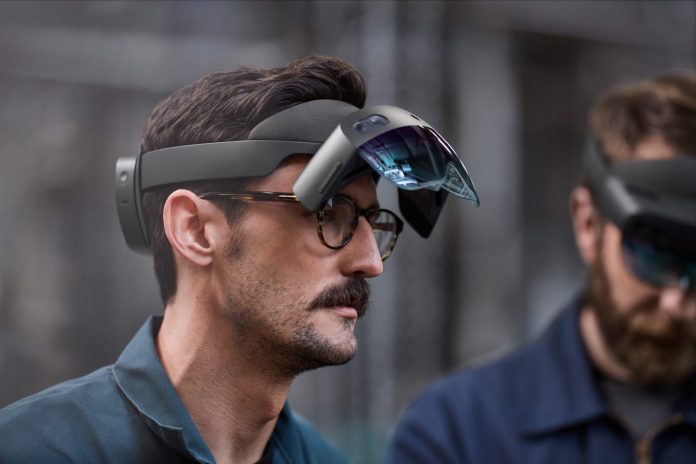Note, this article is taken from an editorial report on industrial AR, called Industrial AR – and the rise of the workers. The report is available to download here.
AR hardware has a reputation for being expensive and cumbersome. How is the experience, actually? Not brilliant, it turns out. “It varies by use case and device, but generally the user experience is acceptable-to-poor,” says Eric Abbruzzese, research director at ABI Research.
Even Microsoft’s latest HoloLens 2, arguably the star turn in the AR field, will not stand up to heavy industrial usage, he suggests. “It is a market leader at the high end, and is still heavy, hot, and difficult to focus [with] for extended use.”
Cheaper alternatives to the HoloLens, as well as high-end rival devices like Magic Leap, have their own issues, he implies. “Monocular devices can alleviate weight and discomfort, but small displays with ‘goldilocks zones’, [which require users to balance] the display and their vision are not ideal.”
The industry itself is more polite, although the implication remains that there is massive work to be done to make the experience both affordable and naturalistic. “The experience is good and continuously improving, but there is still room for growth,” says Qualcomm.
Brian Vogelsang, senior director of XR product management at Qualcomm, runs through the fixes, echoing the harsher sentiments from Abbruzzese. “Headsets need to be lighter, more comfortable and not produce any strain so they can be worn for a full shift,” he says.
There is more, too, around miniaturisation and acceleration of computing, which is Qualcomm’s speciality. “Technology needs to be smaller, lighter, more power-efficient – so it can be used for 12 hours without charge, and without adding weight.” It is the tech industry’s take on the Buckminster Fuller quote about doing more with less, until the resource vanishes. The displays and optics need work; more attention needs to be paid to thermal efficiency.
“Particularly in AR, we need to see higher resolution displays with wider fields of view,” he says.
Enterprise costs represent a barrier, as well. Lower prices for smart glasses from the likes of RealWear and Vuzix, at around $1,000, are easier to justify upfront than the high-end fees for HoloLens or Magic Leap devices, rising to $2,000-$4,000.
Abbruzzese says: “While lower costs mean lesser capabilities, there is also an important relationship between the use case and the device, where deployments for things like remote expertise may be able to capture 90 percent of potential ROI, hypothetically, at 50 percent of the price.”
These higher-end products may go down as pioneer devices, showing the way ahead, which will be navigated in time by the kinds of advances Qualcomm suggests. In the meantime, prices continue to fall, as components are sourced from the smartphone market and the consumer sector carries the charge.

